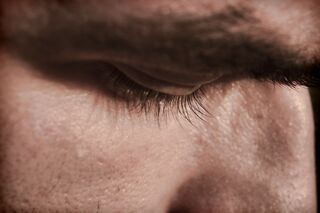Depression
AI Detects Post-Stroke Depression "Type"
Japanese scientists’ AI distinguishes between anxiety, depression, and apathy.
Posted July 22, 2021 Reviewed by Kaja Perina

Researchers at Hiroshima University have applied artificial intelligence (AI) machine learning that may improve the mental health care of stroke survivors by detecting a patient’s post-stroke depression (PSD) type, and published their study in Scientific Reports.
Strokes have reached epidemic proportions globally. According to the World Stroke Organization, each year over 13 million people will have a stroke resulting in roughly over 5 million deaths globally, and one out of every four adults over the age of 25 years old worldwide will have a stroke in their lifetime.
Strokes are among the leading causes of serious long-term disabilities and deaths in the United States. In the U.S., over 795,000 will have a stroke each year, and every four minutes an American dies of stroke according to the Centers for Disease Control and Prevention (CDC).
“In this paper, we focus on mood disorders associated with the vulnerability to stress, namely, depression, apathy, and anxiety, to clarify their cross-sectional relationship with motor/cognitive function after a stroke,” the scientists wrote.
A stroke happens when the blood supply to the brain is disrupted, which leads to a lack of oxygen that can result in brain damage and loss of bodily function. A majority (87 percent) of strokes are ischemic strokes, which are typically caused by a blood clot in an artery that supplies blood to the brain according to the CDC. Hemorrhagic strokes occur when brain artery leaks blood or erupts. Hemorrhagic strokes can be caused by high blood pressure and aneurysms. A mini-stroke, called a transient ischemic attack (TIA), is short in duration, and typically lasts less than five minutes.
“After a stroke, various physical disorders, cognitive dysfunction, and mood disorders associated with stress responses are intricately intertwined, making it difficult to understand the etiology of PSD and, therefore, making the diagnosis of PSD challenging,” the researchers wrote. “Therefore, it is necessary to clarify the relevance of such complicated post-stroke symptoms to improve rehabilitation outcomes.”
Strokes can have a devastating impact physically, mentally, and emotionally. Physically, strokes can result in permanent damage that affect comprehension, memory, speech, and paralysis. From a mental health perspective, strokes can often lead to mood disorders such as anxiety, depression, and a neurological condition called the pseudobulbar affect (PBA), according to the American Stroke Association, a division of the American Heart Association. The pseudobulbar affect is a condition of emotional expression with uncontrollable episodes of crying or laughter. Strokes can lead to emotional issues with increased impulsiveness, loss of self-esteem, grief, and feelings of diminished hope.
“Mood disorders (e.g. depression, apathy, and anxiety) are often observed in stroke patients, exhibiting a negative impact on functional recovery associated with various physical disorders and cognitive dysfunction,” the researchers wrote. “Consequently, post-stroke symptoms are complex and difficult to understand. In this study, we aimed to clarify the cross-sectional relationship between mood disorders and motor/cognitive functions in stroke patients.”
The researchers created a mood disorder identification model composed of three log-linearized Gaussian mixture networks (LLGMNs), which is a type of feedforward probabilistic artificial neural network.
To train the AI machine learning model, the team used a dataset with information from 274 stroke patients at Hibino Hospital. The model used 36 evaluation indices obtained from functional, physical, and cognitive tests given to the 274 stroke survivors. The tests used include the Mini-Mental State Examination, Train Making Test, the Clinical Assessment of Attention Deficit, the Behavioral Inattention Test, the Rivermead Behavioral Memory Test, the Functional Independence Measure (FIM), the Brunnstrom Recovery Scale (BRS), the perceived stress scale (JPSS), and the Hospital Anxiety and Depression Scale (HADS), and medical imaging data from magnetic resonance imaging (MRI) or computed tomography (CT).
“The relationship between mood disorders and motor/cognitive functions were comprehensively analyzed by performing input dimensionality reduction for the neural network,” the researchers reported. “The receiver operating characteristic curve from the prediction exhibited a moderate to high area under the curve above 0.85. Moreover, the input dimensionality reduction retrieved the evaluation indices that are more strongly related to mood disorders. The analysis results suggest a stress threshold hypothesis, in which stroke-induced lesions promote stress vulnerability and may trigger mood disorders.”
Copyright © 2021 Cami Rosso All rights reserved.


